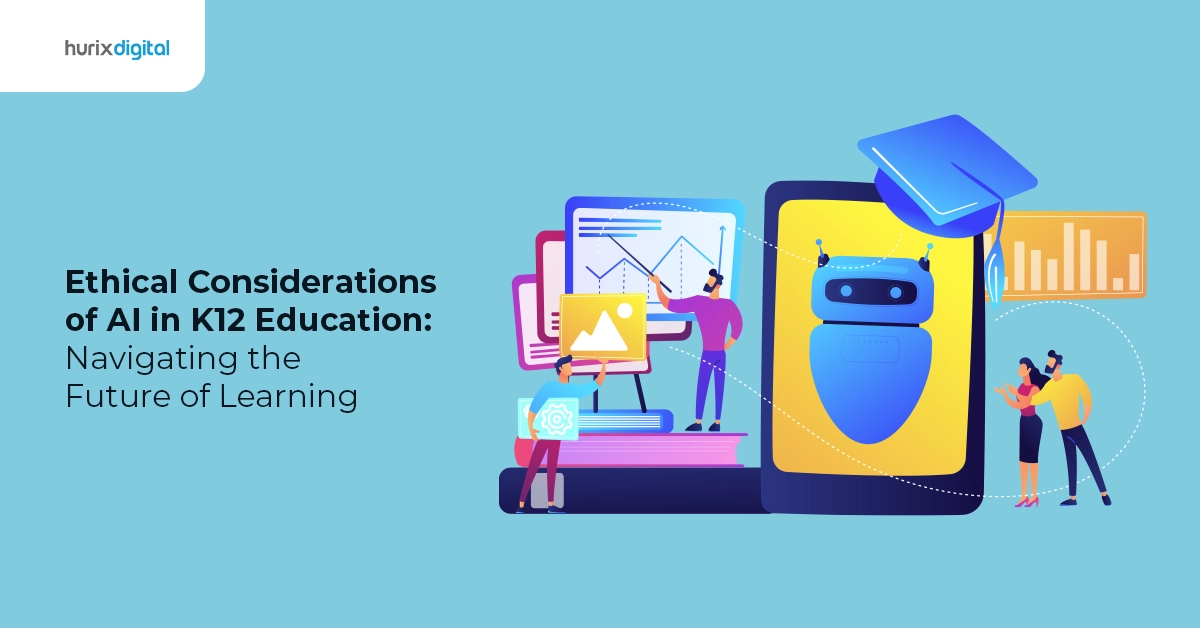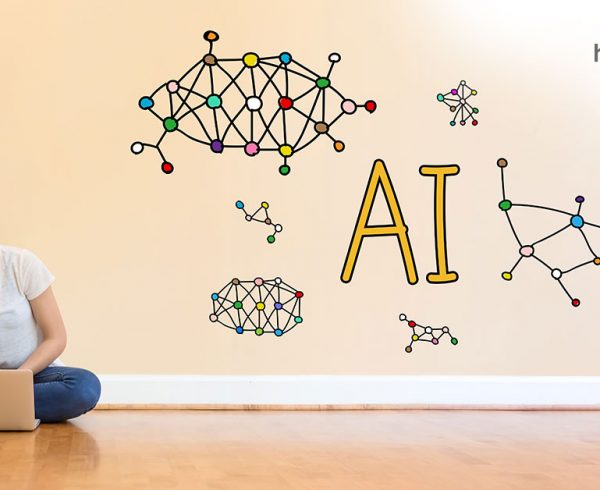Summary
This blog explores the ethical considerations of using AI in K12 education. It outlines key issues like algorithm transparency, data privacy, inclusivity, and human-AI collaboration. The post then suggests practical strategies to address these concerns through auditing, oversight, and professional development.
Artificial intelligence (AI) is transforming education, offering innovative opportunities and challenges in K12 settings. As we navigate this transformative landscape, it’s crucial to address ethical considerations to ensure the responsible and equitable use of AI in education.
Recognizing the multifaceted nature of these challenges, educators must engage in ongoing dialogue, professional development, and collaborative efforts to establish guidelines and frameworks that prioritize ethical considerations. This proactive stance involves not only anticipating potential issues but also actively seeking solutions that uphold the values of fairness, transparency, and student well-being.
Join us as we explore the ethical considerations of AI in K12 education and how you can approach them. Let’s get started!
Table of Contents:
- AI in K12 Education: Ethical Concerns and Their Solutions
- Ethical Considerations of AI in K12 Education
- Summing Up
AI in K-12 Education: Ethical Concerns and Their Solutions
Below are the key ethical considerations when integrating AI into K12 education:
1. Transparency in AI Algorithms
One of the primary ethical challenges of AI in schools revolves around the potential biases embedded within AI algorithms. These algorithms are often complex and opaque. This fact makes it difficult to know how they work, what data they use, and what outcomes they produce.
That’s why it’s so crucial that we examine and address these biases to ensure a fair learning environment.
Here are some tips to help you:
- Focus on creating AI systems that are bias-aware, transparent, and audited for fairness.
- Conduct rigorous testing of AI solutions to identify and mitigate biases before deploying them.
- Uphold ethical standards throughout design, development, and deployment to ensure integrity.
- Encourage open discussions with students and educators about the functioning of AI systems.
- Enable users to question, challenge, correct AI systems, and even opt out if they choose to do so.
2. Student Data Protection
Educational AI applications rely on large amounts of student data. It includes everything from academic records to health conditions and even biometric features.
While it might be a great way to personalize education, it can also threaten student privacy. For instance, data hacking can expose students to identity theft, cyberbullying, and manipulation.
That’s why, with the integration of AI in K12 education, ensuring robust student data protection becomes essential. Follow these measures to safeguard digital data:
- Collect, store, and share student data only when necessary, appropriate, and lawful.
- Ensure compliance with data protection regulations like FERPA and COPPA.
- Use end-to-end encryption and multi-factor authorization to restrict unauthorized access.
- Follow the principles of data minimization, purpose limitation, and consent management.
- Educate students about the importance of data privacy and empower them to make informed choices.
3. Inclusive AI Education
AI education can face barriers and gaps that limit its reach and influence. It can potentially exclude certain groups from benefiting from digital literacy.
Without inclusivity, AI-powered tools may favor certain groups over others, leading to unequal educational experiences.
Here are some ways to provide diverse and inclusive AI education:
- Align AI solutions with your institution’s goals, policies, and practices.
- Blend AI ethics, accessibility, inclusivity, and diversity principles into the curriculum.
- Promote discussions on online safety and empathy-driven digital citizenship education.
- Make AI learning accessible and affordable, regardless of the student’s background or abilities.
- Encourage participation from underrepresented and marginalized communities.
Also Read: Top 10 Roles of AI in Skill Development in Higher Education
4. Impact on Human Teachers
AI in education can augment the role and capabilities of human teachers. It helps them improve their pedagogy, assessments, and feedback.
Yet, it may raise concerns about their possible replacement and the devaluation of their expertise. So, how do you ensure AI does not compete with human teachers? Consider the given points:
- Emphasize the supportive role of AI as a tool to enhance, not replace, human educators.
- Advocate for human oversight in AI-powered assessment to justify and interpret results. It will keep the process ethical and in sync with educational standards.
- Make sure that AI reduces administrative tasks. It will help teachers concentrate on providing personalized and practical instruction.
5. AI Awareness for Educators
It might take more expertise for teachers to navigate the ethical challenges of AI in schools. This knowledge gap can hinder their ability to approach AI-related concerns.
- Provide ongoing professional development opportunities to empower educators.
- Tailor programs and resources to offer AI awareness for educators on different topics.
- Include topics like AI fundamentals, ethics, and practical integration strategies.
Ethical Considerations of AI in K12 Education
As you can see, AI in K12 education can raise ethical concerns for students, educators, and society.
That’s why you must assess its potential risks and implications. Here are some steps to guide you:
Step 1: Define the Scope and Objectives of the AI System
Begin by precisely defining the issue or opportunity that the AI solution seeks to address. Identify the intended users, expected outcomes, and anticipated benefits. This foundational step sets the stage for a nuanced understanding of the ethical landscape.
Step 2: Identify the Ethical Issues and Risks
Scrutinize the AI system for potential ethical implications. Identify sources of concern, such as transparency, privacy, and fairness. A comprehensive evaluation of these issues is imperative to proactively address ethical challenges.
Step 3: Apply the Relevant Principles
Ensure that the AI system aligns with established ethical criteria. Check its adherence to globally recognized standards, such as the UNESCO AI Ethics Recommendation or the ISTE AI Standards. This step fosters a commitment to ethical practices and principles.
Step 4: Enforce the Practical and Ethical Strategies
Identify and employ suitable techniques, such as data auditing and human oversight, to address ethical concerns effectively. Determine how these methods can be integrated into the AI system to detect, measure, and mitigate potential issues, reinforcing ethical safeguards.
Step 5: Observe and Assess the Performance of the System
Establish a framework to continuously observe the ethical impact of the AI system. Utilize data and insights to assess its performance and identify areas for improvement. By maintaining a vigilant stance, organizations can optimize the system to ensure ethical outcomes and foster a responsible AI environment in K12 education.
Also Read: AI in Education Startups: Pioneering the Future of Learning
Summing Up
As we continue to embrace the potential of AI, it is important to focus on ethical concerns to sustain the values of fairness, transparency, and inclusivity. Together, we can create a future where AI in K12 education promotes moral conduct and academic excellence.
Are you curious to learn more about navigating the ethical challenges of AI in schools? Partner with Hurix Digital to enhance K12 education with AI-driven inclusive solutions. With a commitment to ethical considerations in AI, we can indeed pave the way for a future where technology and education coexist harmoniously.
Connect with our experts to learn more!







